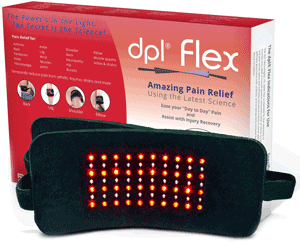Here’s a serious skin cleansing regimen for you, created with a helpful dollop of my home-made, self-brewed logic.
Those of you who’ve read my account of the Caveman Regimen (and most of the other posts on this blog, actually) will know that I’m no fan of cleansers, facial washes, moisturizers or any other “normal” acne skincare regimen.
Except in a few limited circumstances, like this one.
The reason for this point of view, aside from my own experience, is that I’m a firm believer that acne-prone skin is more than capable of healing itself and thereafter, keeping itself free of acne and maintaining a sensible level of oil production if we acne-sufferers would only let it be.
This is based on the science of the acid mantle, and the diet and supplementation you can read about here.
And so in my view, washing with just cool water is ample “skin cleansing”. It’s all our skin had for the first 1,000,000 years of our evolution and it works fine now. But hey, let’s not turn this into yet another rant about how acne treatment manufacturers have no financial incentive to cure your acne, and every incentive to prevent it getting better.
However, while this seems to hold for the majority of average acne cases, including my own, it is also true that some of you do not have “average” acne, and that some of you just can’t get on with the idea that water – and water only – is the best way to keep your skin clean.
With that in mind, for those of you obsessed with the pump-bottle here are my thoughts on designing a least-worst cleansing regimen for acne-prone skin.
1. Wash your hands first!
This is the biggest omission I see in just about every skincare cleansing routine.
If you’re washing your face at the end of the day, chances are your hands have picked up all sorts of dirt, grime, bacteria and who-knows-what else from your daily activities.
If you simply run a tap, fill the basin with cool water, and then proceed to rub your wet hands all over your face, you’re just transferring half of this grime from your hands to your face.
If you were in hospital you’d be pretty cheesed off if your doctor prodded and poked your face without first sanitizing his hands right?
Well then, do the same yourself!
Washing your hands should always be the first step in your cleansing routine.
2. Cleansing – keep it brief, keep it cheap
A cleanser, as the name suggests, is there to clean your skin. It’s soap, nothing more, nothing less.
Just about any other ingredient it lists on the bottle as part of its marketing spin – be it “essential” oils or chamomile or vitamins or extract of minke whale buttcrack – is relatively useless.
With a cleanser none of these ingredients is on your skin long enough to actually do any good.
You wash with cool water, you use your fingertips to gently massage on some cleanser, and then ten seconds later you rinse it off again. It’s that simple.
Side note: Using a fresh washcloth is acceptable, but not as good as using your clean fingertips in my opinion. A fresh washcloth can still harbour bacteria and for some skin types the added exfoliation you get with a washcloth may be a bit harsh.
It’s tempting to get a pricey cleanser and leave it on your skin for a minute or two to work its magic. That’s not what cleansers are designed for however – the soapy ingredients will end up stripping your skin raw and drying it out.
The key, if you must cleanse, is to keep it brief, removing surface oil but retaining as much of the moisture within and between your cells as possible.
When it comes to cleansing, you should think of your face like my griddle pan.
I’ve had my griddle pan for four years now, and in that time (what with my ketogenic diet) it’s griddled enough meat to keep a medium sized farm in good profits.
When I’ve finished griddling my steak, my griddle pan is covered in fat and grease (like an oily face at the end of the day).
But when I’m washing, I don’t scour away at my poor old griddle pan for five minutes with extra-strength washing up liquid.
I give it a rinse under warm water, sometimes with a little soap if necessary to clean off the burnt bits, while retaining the constant, ever-present layer of meat fat I’ve worked so hard to build up – because that’s what adds to the flavour.
With your skin it’s exactly the same – rinse away the day’s excess oil, but retain enough oil in your skin to keep it moist and lubricated, because it’s that very oil which helps your skin defend itself from P. acnes bacteria.
And in terms of price; again, a cleanser is soap, nothing more and nothing less.
Buy cheap soap, and save the products with “active” ingredients for moisturizers and lotions, which soak into your skin for hours at a time.
As for which products to use, unless it has salicylic acid in it (which is about the only active ingredient I recommend you use, especially for mild acne) there’s really no point in spending more than a few bucks on a cleanser.
The least-damaging and best value-for-money cleanser is still Cetaphil Gentle Skin Cleanser, in my opinion, and because it’s so gentle it’s suitable for almost all skin types.
But then again, I don’t use cleansers anymore and firmly maintain that just cleaning with water is usually better. If it’s detailed cleanser reviews you’re after, you’re reading the wrong blog!
3. Cleanse twice daily at most, but once a day is better
Provided you’re sleeping on a nice clean pillowcase, cleansing your skin last thing at night means there’s usually no need to do it again first thing in the morning – you’re just compounding the oil-stripping effects these soap-based products have on your skin.
My recommendation, even for severely oily skin types, is to cleanse in the evening, after you’ve built up a day’s worth of oil and dirt particles, and then rinse your face in the morning using just cool water and fingertips.
This will remove any sheen you’ve built up overnight without removing the oil your skin needs to defend itself throughout the day. After all, during the night your skin hasn’t been exposed to anything particularly dirty or irritating, so there’s not much need to cleanse again in the morning.
——————–
To summarise an effective cleansing routine then, for those who can’t or won’t go full caveman.
In the morning:
- Wash your hands
- Massage cool water over your face to remove surface oil and “sheen”
- Pat dry
In the evening:
- Wash your hands
- Wet your face all over with cool water
- Make this next part as quick as possible, no more than ten seconds –
- Using your fingertips only, massage in the gentlest and best value-for-money cleanser you can find, such as Cetaphil Gentle Facial Cleanser. Make sure it has as few ingredients as possible.
- Rinse your face with cool water
- Pat dry
If you’re doing it correctly, the whole routine should take about thirty seconds at most.
One final point – once cleansed and rinsed, pat (not rub) your face dry with a clean towel or even better, a piece of tissue paper. Use proper manly tissues to dry with, not toilet roll which will leave you with crummy bits of white paper all over your face.
I’ll leave it to you to devise a suitable method for testing the resilience of your chosen tissue against liquids…
If you must cleanse, do it quickly, do it cheaply and do it once a day at most.


